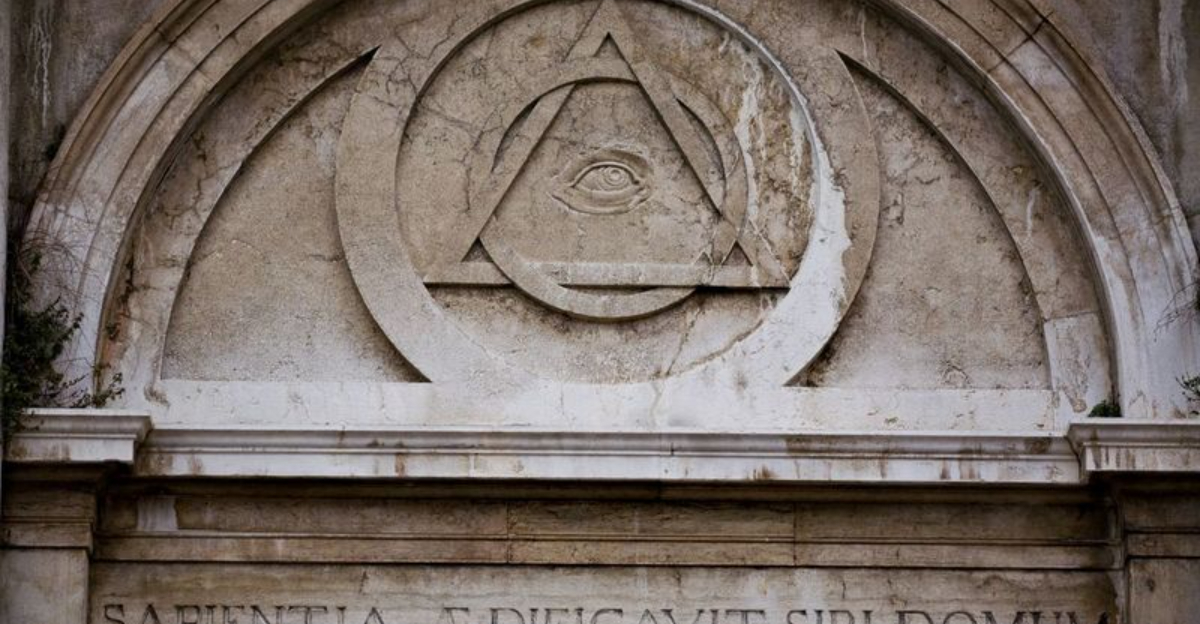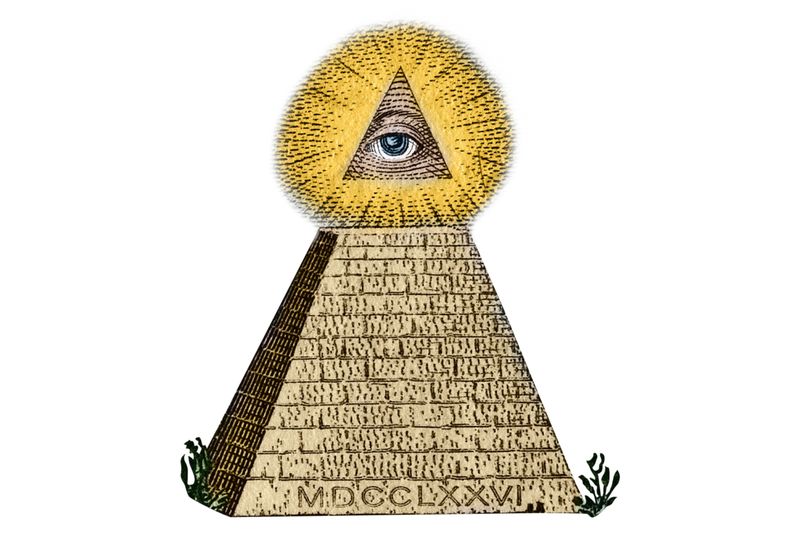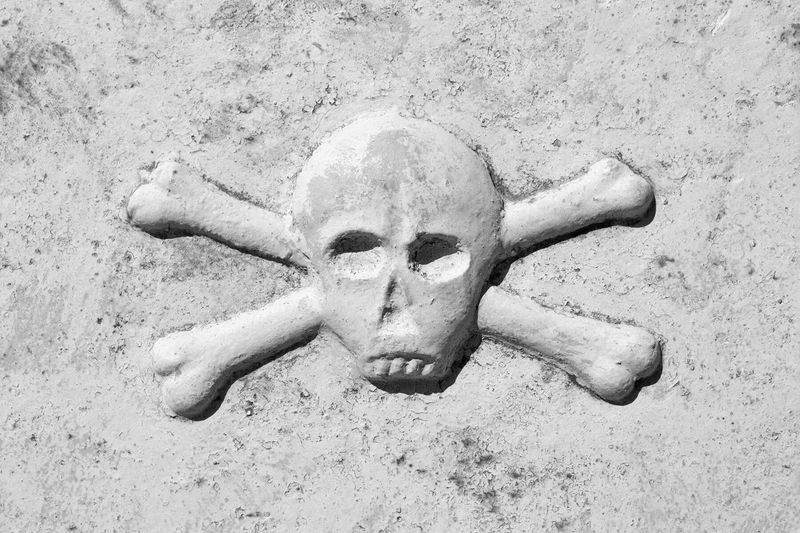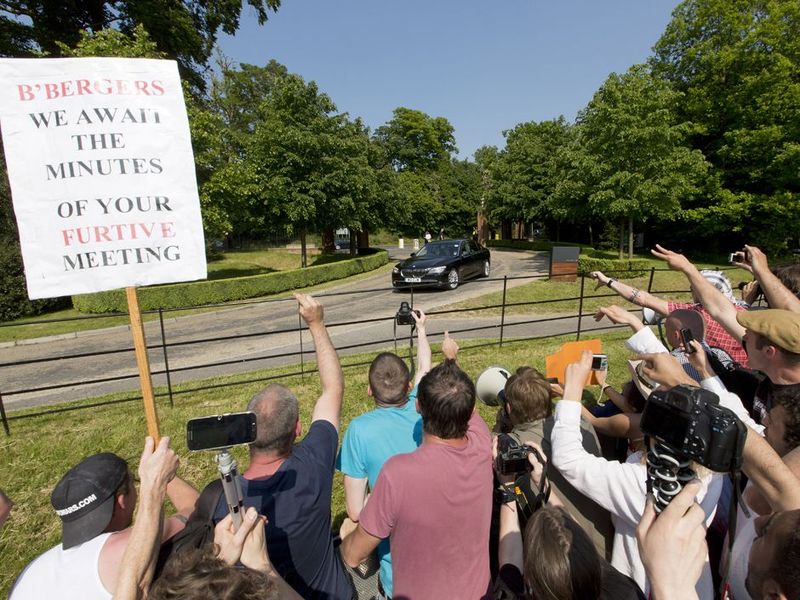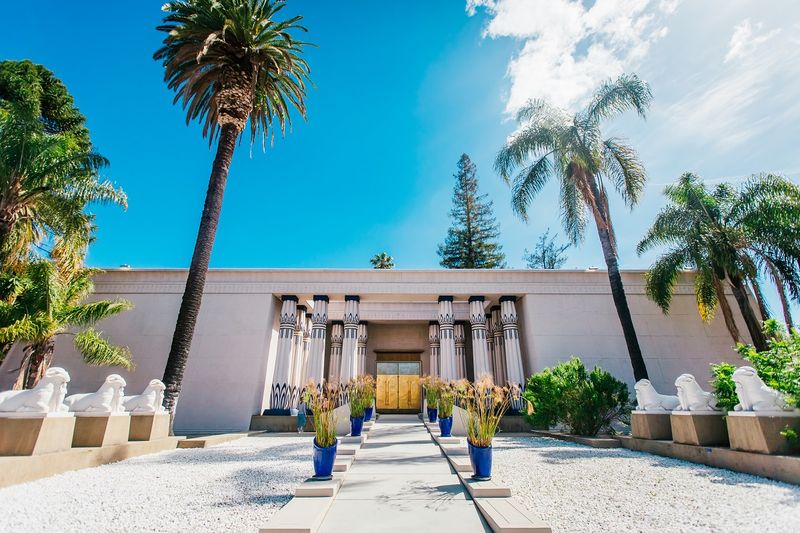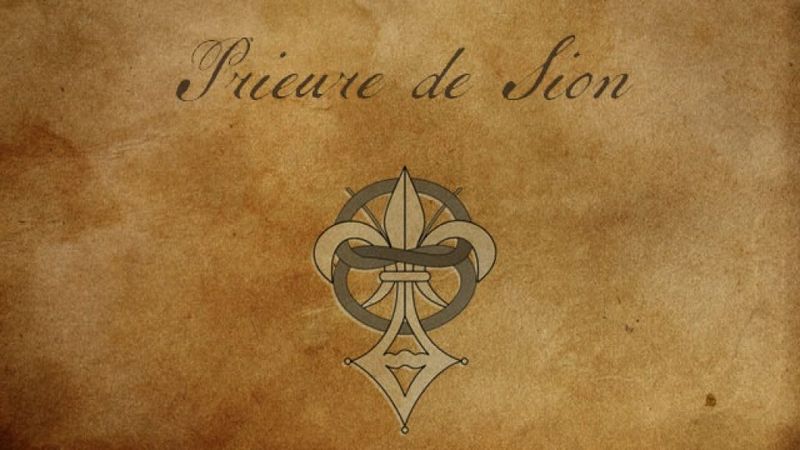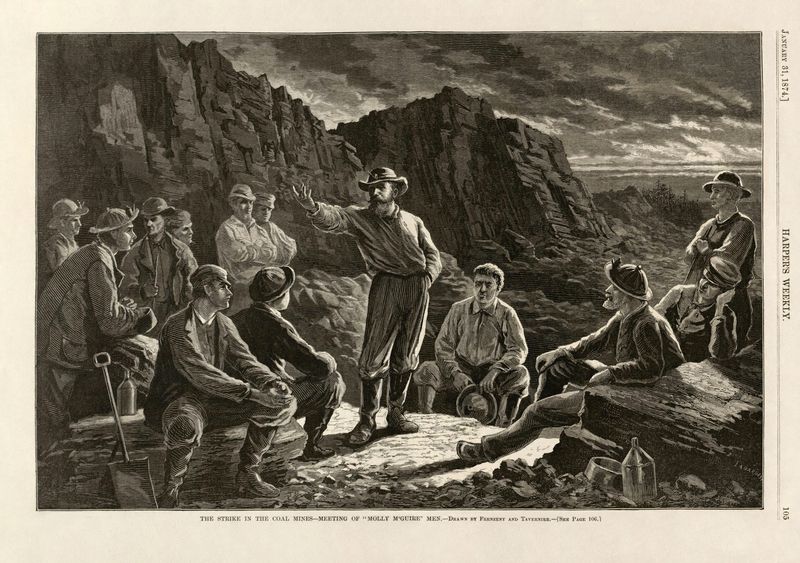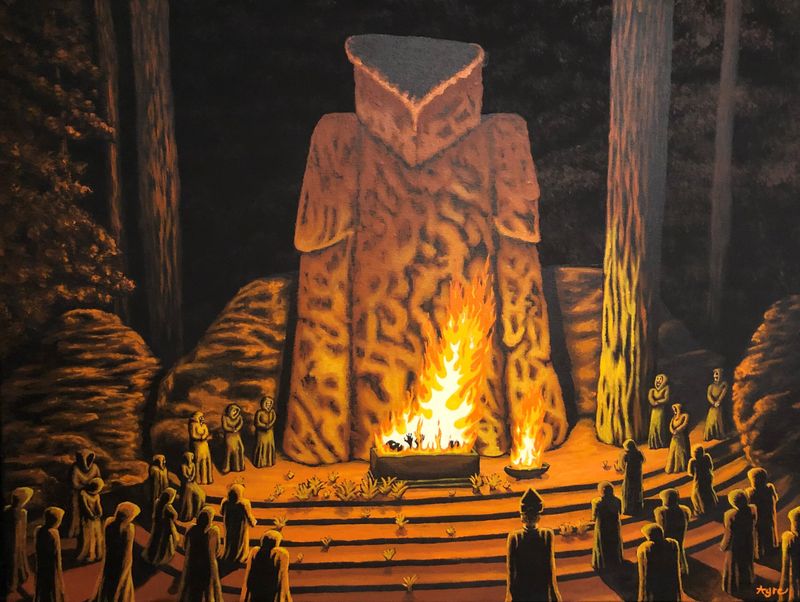Throughout history, secret societies have operated in the shadows, claiming to hide their activities from the public eye. They’ve created elaborate rituals, exclusive memberships, and mysterious symbols to maintain their secrecy. But many of these supposedly hidden organizations ended up becoming household names. Whether through leaks, investigations, or their own visibility, these groups couldn’t keep their secrets buried forever.
1. The Illuminati: Conspiracy Superstar
Founded by professor Adam Weishaupt in 1776, the Bavarian Illuminati lasted barely a decade before being outlawed. Their secret? Not secret enough for Bavarian authorities who seized their documents and published them for all to see.
Despite their short existence, their legend grew into pop culture’s favorite shadowy puppet masters. From Beyoncé’s hand signals to dollar bill symbols, conspiracy theorists find “evidence” everywhere.
The real irony? The original Illuminati’s goal was promoting Enlightenment values like reason and education – not controlling global finance or recruiting celebrities for world domination.
2. Skull and Bones: Yale’s Worst-Kept Secret
Nothing says “we’re totally inconspicuous” like a windowless building called “The Tomb” right in the middle of Yale University. This elite society boasts presidential members like both Bush presidents and counts numerous CIA founders among its ranks.
Their secrecy crumbled when ritual photos leaked showing initiates lying in coffins and kissing skulls. Campus tours regularly point out their headquarters, and books detail their bizarre traditions.
When both 2004 presidential candidates (George W. Bush and John Kerry) were revealed as members, late-night comedians had a field day. So much for staying underground!
3. The Bilderberg Group: VIP Meeting Everyone Knows About
Annual gatherings of world leaders, banking executives, and media moguls sound like perfect conspiracy fodder. The Bilderberg Group tries maintaining privacy with no press releases and closed-door policies, yet everyone knows exactly when and where they meet each year.
Journalists camp outside their luxury hotels while protesters wave signs about the “secret world government.” Their guest lists leak regularly, revealing attendees like Henry Kissinger, Bill Gates, and European royalty.
One former attendee quipped: “It’s hard to plot world domination when demonstrators with megaphones are shouting outside your conference room window.”
4. The Freemasons: Hidden in Plain Sight
America’s founding fathers didn’t exactly keep their Masonic ties under wraps. George Washington laid the Capitol cornerstone in full Masonic regalia, while Benjamin Franklin published their previously secret handbook!
Their square and compass symbol appears on government buildings worldwide, and their lodges operate with large, marked buildings in town centers. For a ‘secret’ society, they host public events, maintain websites, and even advertise membership drives.
Modern Freemasons laugh at conspiracy theories about their influence. “If we ruled the world,” one Mason joked, “we wouldn’t spend so much time organizing charity fundraisers and fish fries.”
5. The Thule Society: Occult Roots Exposed
Mixing Nordic mythology with occult practices, this German group couldn’t keep their supernatural shenanigans under wraps. Their connection to early Nazi ideology became painfully public knowledge after World War II.
Historical records revealed how their mystical nationalism influenced Hitler’s inner circle. Though officially disbanded in 1925, their ideas permeated Nazi symbolism and racial theories.
Members included Rudolf Hess and Alfred Rosenberg, key Nazi figures. Their once-secretive meetings in Munich’s Four Seasons Hotel now feature in countless history books as scholars trace how fringe occult beliefs transformed into state-sponsored terror.
6. The Rosicrucians: Publishing Their Own Secrets
Nothing says “we’re super secretive” like publishing your manifestos for the general public! The Rosicrucians announced themselves to the world in the early 1600s through widely distributed pamphlets describing their mystical beliefs.
Today, they advertise on billboards and maintain a museum in San Jose, California. Their mail-order lessons in mysticism and self-improvement reach thousands of subscribers worldwide.
They even run television commercials inviting new members to join. As one historian noted: “They’re about as secret as Disneyland – they have gift shops, guided tours, and an active social media presence.”
7. The Carbonari: Revolutionary Blabbermouths
Revolutionary secret societies typically prefer staying, well, secret. The Carbonari apparently missed that memo while plotting Italian unification in the 1800s. Their “secret” cells spread so widely that Austrian authorities knew their leadership structure, code words, and meeting locations.
Many members couldn’t resist bragging about their revolutionary credentials in taverns. Their distinctive symbols – triangles, ribbons, and coal references – made members easily identifiable.
When they finally launched uprisings across Italy, nobody was surprised. Newspapers had been reporting on their activities for years, proving that thousands of passionate patriots make terrible secret-keepers.
8. The Hellfire Club: Elite Debauchery on Display
British aristocrats in the 1700s thought they were being sneaky with their scandalous underground parties. Founder Sir Francis Dashwood purchased an abbey and carved out caves for their gatherings, hardly discreet moves for maintaining secrecy.
Their mock-religious orgies became London’s favorite gossip topic. Even Benjamin Franklin attended these notorious events during his time in England. Politicians openly joked about members’ activities in Parliament.
The final blow to their “secrecy”? Members commissioned paintings of their activities and kept journals describing their debauchery. These wealthy thrill-seekers clearly valued bragging rights over actual discretion.
9. The Priory of Sion: Famous for Being Fake
Before Dan Brown’s “The Da Vinci Code” made them globally famous, the Priory of Sion was already infamous among historians as an elaborate hoax. Creator Pierre Plantard fabricated ancient documents in the 1960s claiming the group protected Jesus Christ’s bloodline for centuries.
French authorities discovered the fraud when investigating Plantard for unrelated matters. The “ancient parchments” turned out to be modern forgeries planted in the National Library of France.
Despite being thoroughly debunked, their legend continues in conspiracy circles. Perhaps the real secret society is the friends Plantard made along the way while committing historical fraud!
10. The Hashshashin: Marketing Their Mystique
Medieval Persia’s deadliest cult turned fear into their greatest weapon. Rather than hiding their existence, the Hashshashin (Assassins) deliberately spread terrifying stories about their abilities to strike anywhere, anytime.
Their leader Hassan-i Sabbah invited foreign emissaries to his mountain fortress, ensuring tales of their fanatical devotion spread throughout the known world. Their reputation became so widespread that the word “assassin” entered numerous languages.
Kings received threatening daggers on their pillows as warnings. The Assassins weren’t just killers – they were history’s first masters of psychological warfare, proving sometimes the scariest secret societies aren’t secret at all.
11. The Black Hand: Signature Killers
Signing your work defeats the purpose of secret terrorism. Serbia’s Black Hand revolutionaries apparently missed this lesson when they left their calling card – a hand print and dagger – at crime scenes across the Balkans.
Their 1914 assassination of Archduke Franz Ferdinand triggered World War I, hardly keeping a low profile. The assassin, Gavrilo Princip, was caught immediately and quickly revealed the organization’s involvement.
Serbian military intelligence barely concealed their connections to the group. Their leader, Colonel Dragutin Dimitrijević, held an official government position while orchestrating political murders – making the Black Hand less shadowy conspiracy and more open terrorist organization.
12. The Molly Maguires: Infiltrated From Day One
Pennsylvania coal miners in the 1870s formed this secret labor group to fight dangerous working conditions. Their secrecy collapsed spectacularly when the Pinkerton Detective Agency planted agent James McParlan among them for years.
McParlan documented every meeting, plot, and member while befriending the group’s leaders. His detailed testimony led to the public hanging of 20 members after highly publicized trials that newspapers covered nationwide.
Their story became so well-known that it inspired novels, plays, and eventually movies like Sean Connery’s “The Molly Maguires.” For a secret society, they achieved remarkable fame – though certainly not the kind they wanted.
13. The Bohemian Club: Playground for the Powerful
When your “secret” summer camp hosts presidents, CEOs, and celebrities, discretion becomes impossible. The Bohemian Club’s annual retreat at Bohemian Grove in California features a bizarre owl-worshipping ceremony that’s been infiltrated by journalists multiple times.
In 2000, Alex Jones snuck in and filmed their “Cremation of Care” ritual, where members burn an effigy before a 40-foot stone owl. Former presidents Nixon, Reagan, and both Bushes have attended these supposedly secret gatherings.
Their San Francisco clubhouse stands prominently in the city center with their owl logo displayed outside. Members often name-drop their affiliation in interviews, suggesting exclusivity matters more than actual secrecy.
14. Opus Dei: Corporate Catholicism Exposed
Long before “The Da Vinci Code” featured self-flagellating albino monks, Opus Dei was already famous within Catholic circles for its influence and wealth. Founded in 1928, this organization maintains corporate headquarters in New York and Rome – complete with signs and reception desks.
Their members hold powerful positions in banking, education, and government. They operate universities and publish their own materials explaining their mission of sanctifying ordinary work.
While they don’t advertise controversial practices like corporal mortification (wearing spiked chains called cilices), former members have extensively documented these rituals in books and interviews. Their $47 million Manhattan headquarters hardly screams “underground organization.”
